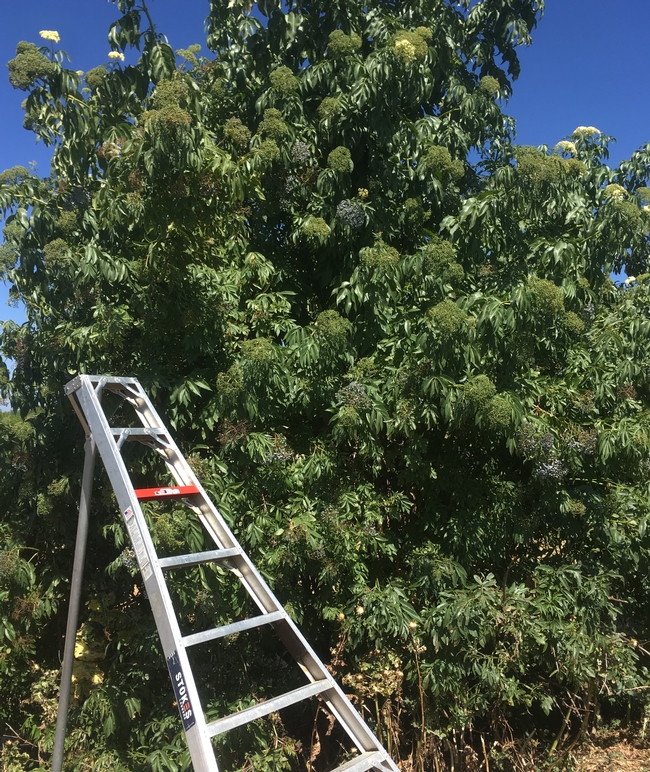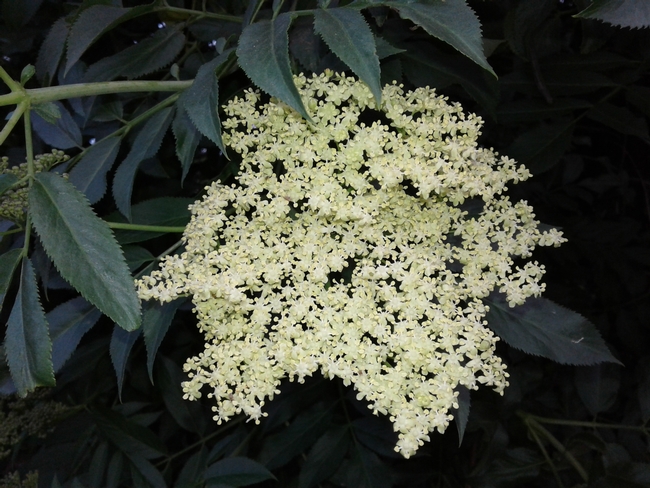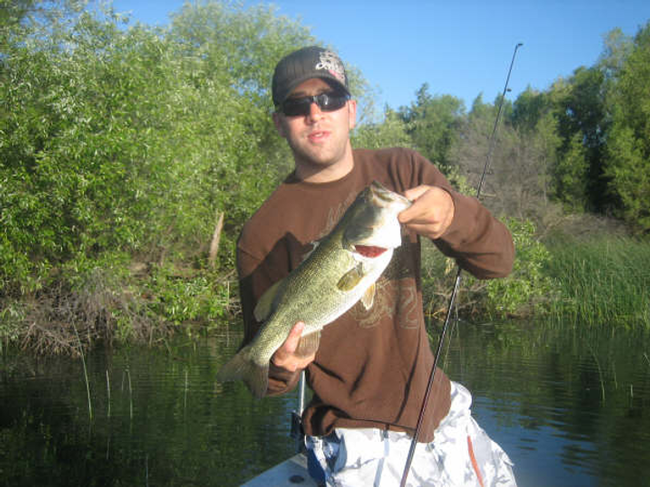
Posts Tagged: Economics
A Unique Project: A Video Guidebook to Showcase a Scientific Textbook
There's never been anything like this before. A landmark textbook on the newly emerging field of biodemography, lead-authored by UC Davis distinguished professor James R. Carey, has evolved into another landmark: Carey has created, recorded and published a...
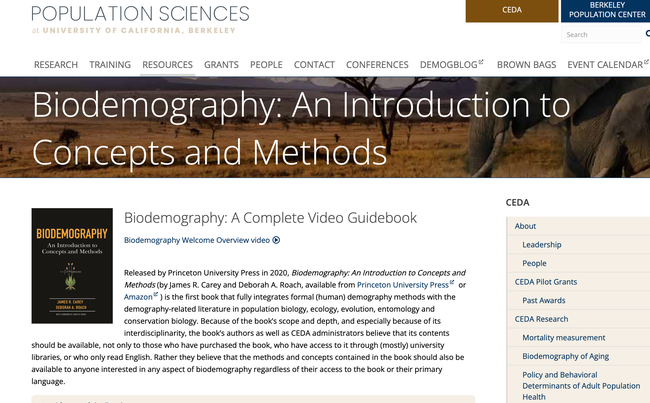
Screen Shot 2022-09-22 at 4.03.46 PM
New guide shows how elderberry activates hedgerows, ecologically and commercially
A farm-edge hedgerow can be more than a boundary or barrier. When it comprises blue elderberry, it can be a way to integrate biodiversity in an often-simplified agricultural landscape – and connect with a legacy of stewardship and use by California's Native peoples.
A new guide, published by UC Agriculture and Natural Resources, provides detailed instructions and advice for California farmers on growing, harvesting and marketing blue elderberry. It is available as a free download in the UC ANR catalog at https://anrcatalog.ucanr.edu/Details.aspx?itemNo=8709.
“It's the only publication of its kind, that we know of, that focuses on commercial production of a native species from within a hedgerow, which people normally think of as a conservation feature,” said Sonja Brodt, one of the publication's authors and associate director of UC ANR's Sustainable Agriculture Research and Education Program.
In addition to illustrating the plant's many ecological benefits, “Producing Blue Elderberry as a Hedgerow-Based Crop in California” highlights the economic viability of the products made from its flowers, berries and other components.
“Consumer interest in elderberry products is booming,” said Brodt, “and blue elderberry has the potential to meet local needs with a locally adapted species that is climate-resilient, and can be produced in a relatively low-input way that supports – rather than displaces – our native ecosystems.”
The guide incorporates the findings of a UC SAREP project exploring the farm management practices, nutritional content and market potential of elderberry products. And Brodt emphasized that this resource also draws upon the deep knowledge of Indigenous people, as well as best practices of growers such as Katie Fyhrie, formerly of The Cloverleaf Farm in Dixon and another author of the guide.
“We originally got inspiration to do this work from local farmers who are pioneering the use of blue elderberry harvested on their farms, and from Native Americans in California who have long stewarded and utilized blue elderberry for food and other cultural uses,” Brodt explained.
The other publication authors are Gwenael Engelskirchen, sustainable supply chain analyst for UC SAREP; and Katie Uhl, graduate student researcher; and Alyson Mitchell, professor in UC Davis' Department of Food Science and Technology.
Giant hogweed is devastating parts of rural Russia
From New York Times, 3 October 2020 - A sad story about a poisonous invasive weed.

Photo: Sergey Ponomarev for the New York Times
How aquatic weeds affect costs to the U.S. Bureau of Reclamation
The U.S. Bureau of Reclamation (BOR) is one of the agencies responsible for operating a facility that pumps water from the Sacramento-San Joaquin Delta into the California Aqueduct. The California Aqueduct pumps water for uses south of the facilities. This water is used for agriculture in the San...
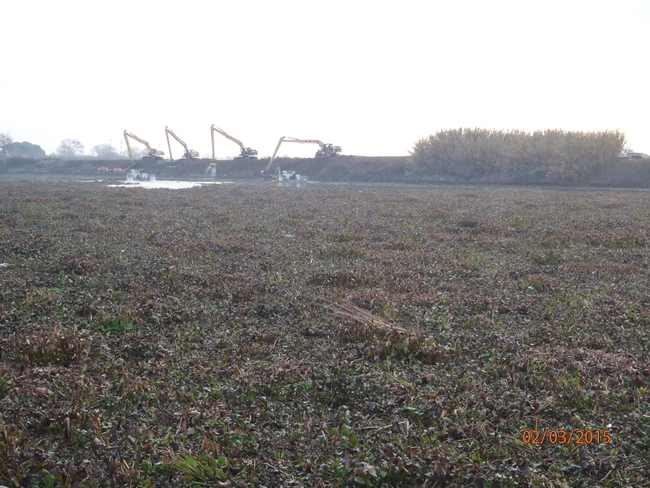
Extent
Communities reel in revenue from sport fishing
In August, the Clayton Fire burned nearly 4,000 acres and 198 homes and businesses in Lake County. In 2015, the Valley, Rocky and Jerusalem fires together burned 170,623 acres and destroyed 2,078 structures. But the devastating Lake County wildfires haven't put a damper on fishing at Clear Lake, which reels in roughly $1 million to the community annually, according to a report from UC Cooperative Extension.
“The lake's economic attraction has not been negatively impacted by the fires,” said Greg Giusti, UC Cooperative Extension advisor in Lake County and author of the study. “The fish are fine and the anglers keep coming.”
Giusti's report outlines the economic value of fishing on Clear Lake, highlighting the importance of the outdoor pastime to the local economy.
Bass, crappie, catfish and bluegill thrive in Clear Lake's warm water, with its rich plant life and abundant food supply.
“People come from all over the country to fish Clear Lake,” said Giusti, who studies fisheries and freshwater ecology.
Teeming with fish, Clear Lake's reputation attracts serious anglers. Bass Master Magazine (July/August 2016) rated Clear Lake third out of the top 100 bass fishing lakes in the country and first among the nine western states.
More data need to estimate true economic value of fishing
Based on a conservative estimate of the number of anglers and multiplying by $58.16, (the U.S. Fish and Wildlife Service's estimate of an angler's average daily fishing-related expenditure), Giusti concluded Clear Lake fishing is a $1 million enterprise. He considers the true value of fishing on Clear Lake to be much higher because limited data was available to understand the full economic value.
To estimate the number of anglers, Giusti doubled the number of quagga mussel stickers sold and added the number of people registered for Clear Lake fishing tournaments. Before entering the lake, boats must pass the county's monthly quagga mussel inspection for the invasive species and receive the sticker. Giusti assumed an average of two anglers per boat, for a total of 10,156 spending $590,673 annually. Since 6,498 Lake County residents have fishing licenses, he estimated that they spend at least $377,923.68 on fishing annually.
He thinks local businesses can capitalize on fishing to bring even more revenue into the community by enticing anglers and their families to engage in other activities during their visit.
“Because access to the lake is open and free, we don't know how often anglers return to Clear Lake and for how long they stay,” Giusti said. “While they're here, folks are spending money on food, gas, tackle and maybe lodging. If they bring their families, Dad may be fishing while Mom and the kids might be at the movies.”
California Department of Fish and Wildlife collects about $57 million in fishing license sales each year. Giusti found that more than 150,000 licenses were sold in 2014 to anglers in Lake County and neighboring Mendocino, Sonoma, Colusa and Sacramento counties, which are close enough to make a day trip to Clear Lake.
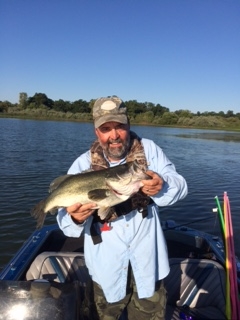
Although local businesses typically gear up for summer tourists, Giusti sees marketing opportunities around fishing during the spring and fall, as the primary angling months occur before and after summer.
“Right now all the focus is on summer tourism and wine, while the most active visitor months are not recognized,” Giusti said. “Spring months are the most popular boating months. Businesses should be hanging banners downtown, putting posters in the windows welcoming anglers with specials for meals, promotional events highlighting fishing, and even sponsored fishing tournaments.”
Other California communities could also benefit by capitalizing on fishing, in Giusti's opinion.
“Freshwater fishing in California represents a $1.4 billion industry, generating 22,000 jobs and providing more than $920 million in salaries and wages,” said Giusti. “California ranks fifth in the nation based on the value of fishing economics.”
The American Sportfishing Association estimates that more than 33 million people enjoy fishing in America, and spend an average of $1,441 per year on fishing.
To download the full report, “Understanding the economic value of angling on Clear Lake – A profile of a famous lake,” visit http://ucanr.edu/sites/ClearLakeAquaticWebsite.

